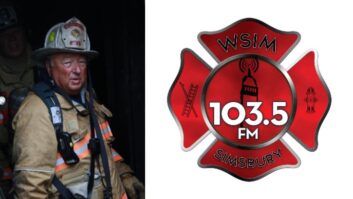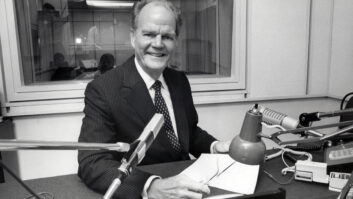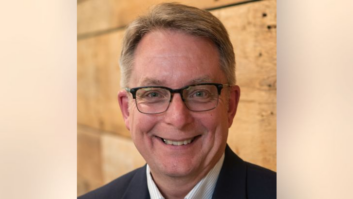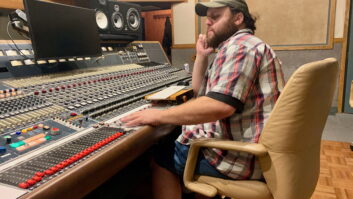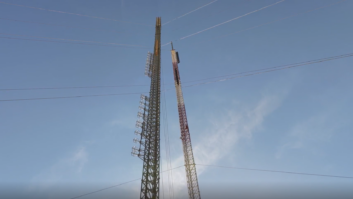WASHINGTON Even though it used the best technology of its kind when launched in 1997, Perfect Paul was never quite good enough.
That’s why many broadcasters and Emergency Alert System managers say they won’t miss the much-maligned computer-generated voice used by the National Oceanic and Atmospheric Administration’s weather radio.
National Weather Service officials say two new voices – a male’s and a female’s – will replace the old system beginning in early 2002 if testing continues to go well.
Named Craig and Donna, these voices will help deliver warnings and forecasts for the 121 weather stations in the United States.
The decision comes after several months of focus groups and online surveys to determine a suitable replacement. Weather service officials said their goal was to find a voice-synthesis system more easily understood. Broadcasters long complained that Perfect Paul often was unintelligible. Some refused to air the robotic warnings.
The technology used for the new voices is different from the outmoded software of Perfect Paul, said Joanne Swanson, NWS meteorologist and voice-evaluation leader. The new voice’s text-to-speech software, called Speechify, combines concatenated pre-recorded phonetic sounds with the intonation of a human voice.
The new voices are human voices, recorded and cut at the syllable level with intonation and grammar added, she said. NOAA meteorologists will be able to tune the system to include local geographical terms and pronunciations.
The NWS awarded a $633,000 contract to Siemens Information and Communication Network for the voice synthesizing software. Siemens will team with SpeechWorks International to provide the computer program for the voice makeovers.
“It’s a more natural language sounding system. I think everyone would admit that Perfect Paul had problems. What is more important is how far the automation has come in the past five years,” Swanson said.
The automated system was implemented as part of the Console Replacement Program the NWS undertook beginning in 1997, which allows meteorologists to type in messages and have them automatically “voiced” by computer.
Swanson said the “timeliness and effectiveness” of warnings are critical in protecting the public. She said that’s why the public’s input was important in determining the new synthesized voice.
More than 19,000 Internet surveys were relayed to NOAA about Paul’s possible successor between March and July. A NWS Web site featured five voices, including Paul, for comparison. Of the samples, the voices called Art and Linda failed to make the grade while Craig received the highest marks, Swanson said. Ninety-five percent of respondents rated his voice number one. Donna got an 80-percent approval ranking, according to the public surveys.
Swanson said the NWS was asked by its meteorologists to provide a female voice to give them the option of alternating male and female voices.
To download and hear the new voices, visit the NWS Web site at www.nws.noaa.gov/nwr/newvoice.htm.
EAS officials differ as to the likely success of NOAA Weather Radio’s Craig and Donna voices. Swanson said the NWS wants to make sure EAS officials and broadcasters are “back on board” and carrying the weather warnings promptly, she said.
Swanson said some broadcasters have refused to carry Paul-voiced warnings because they found him hard to understand. Instead, those broadcasters waited for the information to be read by an on-air person.
Clay Freinwald, chairman of the SBE/EAS committee and Washington State EAS committee, said the difference between the old and the new voice system is dramatic.
“I think they have made a significant improvement. It’s likely that broadcasters who had concerns previously about carrying the automated messages won’t be hesitant to do so now,” Freinwald said.
Bill Croghan, chief engineer for KOMP(FM), KXPT(FM) and KENO(AM) in Las Vegas, said it’s likely more stations will now carry the verbatim NWS warnings.
“That should help in eliminating the delay in getting the warnings out. I consider the new voices a great improvement over Perfect Paul,” Croghan said.
Several other radio sources said they had listened to the voices and believe Craig is the best. “Except for a few inflection problems, the voice is very natural-sounding,” one source said.
However, despite advances in text-to-speech technology, some EAS officials and broadcasters are not yet satisfied with the timbre of the new voices.
Richard Rudman, chairman of the EAS National Advisory Committee and the Los Angeles County local emergency committee, said he wished the voice choice committee would have waited for something better to come along.
“The new voices chosen are an improvement but still have major shortcomings,” Rudman said. “They still have quality and inflection issues that bother me.”
Rudman commended the Weather Service for listening to broadcasters’ complaints about quality problems. He said he hoped the NWS will continue to seek improvement.
“What EAS folks want is the best possible voice for the purpose of issuing warnings,” Rudman said.
“I won’t be inclined to carry them,” said Chris Boone, chief engineer for KDMX(FM) and KEGL(FM) in Dallas/Ft. Worth. “They still sound computer-like and too canned. I can hear the digital artifacts in them. … not as bad as Paul, but I wouldn’t put them on a broadcast station.”
Boone said he would rather have the Dallas LP-1 station, WBAP(AM), air a human read of the warning, even if that means delaying the information by a minute. “It’s still better than the robot radio voice,” he said.
Michael Barnes, chief engineer at KVMV(FM) in McAllen, Texas, was disappointed with the results of the search.
“We do not air Perfect Paul and I’m not sure if we’ll use the new system or not. I have heard better-sounding computer voices on various IVR (interactive voice response) systems and other automated systems,” Barnes said.
Swanson admits the new voices are not perfect.
“It’s very subjective. However, they are the best we have right now and the closest technology can get us to sounding more human. We have signed up for all of the available upgrades when they become available, so we expect the system will improve with time.”
Each weather service office will receive a new computer and Speechify software. Swanson estimates all 121 weather stations should be retrofitted with the new equipment by the end of 2002.
